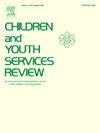探索儿童福利服务中家庭参与的动态和结果:结构方程建模方法
IF 1.7
2区 社会学
Q1 FAMILY STUDIES
引用次数: 0
摘要
有效地让家庭参与儿童福利服务仍然是一个持续的挑战,这是由机构实践和家庭环境之间复杂的相互作用所决定的。虽然现有的研究已经探讨了这个问题,但它主要依赖于机构和社会工作者的观点,往往忽视了家庭的关键观点。目的调查家庭在儿童福利系统中的主观体验和感知,重点关注他们对儿童福利工作者的满意度和整体参与度。方法:本研究利用了通过对中西部一个州实施替代性应对方案的评估收集的数据。机构行政数据与从家庭和工人调查中获得的额外数据相结合。本研究通过结构方程模型(SEM)考察了感知员工互动方式和直接接触时间对家庭参与、满意度和再推荐率的影响。结果扫描电镜分析发现,家庭参与、满意度、员工互动方式和与家庭直接接触的时间之间存在显著相关性。研究结果表明,移情和沟通的员工互动(Coef。= 2.02, p <;0.001),直接接触增加(Coef。= 0.60 p <;0.05)与更高的家庭参与度有关。家庭参与也是家庭满意度的有力预测指标。= 1.46, p <;0.001)。然而,家庭参与水平并不能显著预测转诊总数。风险水平与转介总次数正相关,凸显风险评估在儿童福利中的重要性。参与替代反应(AR)计划与再转介总数的减少有关。相比之下,提供具体服务与转诊增加有关。讨论本研究强调了儿童福利机构加强工人与家庭互动和增加直接接触时间以改善家庭结果的重要性。虽然家庭参与和满意度是必不可少的,但风险水平和服务提供等因素直接影响再转诊率。未来的研究可以探索额外的调整结果,以更好地了解影响儿童福利参与和干预的因素。本文章由计算机程序翻译,如有差异,请以英文原文为准。
Exploring the dynamics and outcomes of family engagement in child welfare services: A structural equation modeling approach
Background
Engaging families effectively in child welfare services remains a persistent challenge, shaped by complex interactions between agency practices and family circumstances. While existing research has explored this issue, it has predominantly relied on data from agency and caseworker perspectives, often overlooking the crucial viewpoint of the families.
Objectives
This study investigates families’ subjective experiences and perceptions within the child welfare system, focusing on their satisfaction with child welfare workers and overall engagement.
Methods
The study draws on data collected through an evaluation of the implementation of Alternative Response in a Midwestern state. Agency administrative data is integrated with additional data obtained from family and worker surveys. The study examines the effects of perceived worker interaction style and the time spent in direct contact on family engagement, satisfaction, and re-referral rates through a Structural Equation Model (SEM).
Results
The SEM analysis identified significant correlations between family engagement, satisfaction, worker interaction style, and time spent in direct contact with the family. The findings demonstrate that empathetic and communicative worker interactions (Coef. = 2.02, p < 0.001) and increased direct contact (Coef. = 0.60, p < 0.05) are linked to higher family engagement. Family engagement is also a robust predictor of family satisfaction (Coef. = 1.46, p < 0.001). However, family engagement level does not significantly predict the total number of re-referrals. Risk level is positively correlated with the total number of re-referrals, highlighting the importance of risk assessment in child welfare. Participation in the Alternative Response (AR) program is linked to a decrease in the total number of re-referrals. In contrast, the provision of concrete services is associated with an increase in re-referrals.
Discussion
The study emphasizes the importance for child welfare agencies to enhance worker-family interactions and increase time spent in direct contact to improve family outcomes. While family engagement and satisfaction are essential, factors such as risk level and service provision directly impact re-referral rates. Future research can explore additional adjusted outcomes to better understand factors influencing child welfare engagement and interventions.
求助全文
通过发布文献求助,成功后即可免费获取论文全文。
去求助
来源期刊

Children and Youth Services Review
Multiple-
CiteScore
6.30
自引率
6.10%
发文量
303
期刊介绍:
Children and Youth Services Review is an interdisciplinary forum for critical scholarship regarding service programs for children and youth. The journal will publish full-length articles, current research and policy notes, and book reviews.
 求助内容:
求助内容: 应助结果提醒方式:
应助结果提醒方式:


